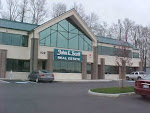
The City of Puyallup is situated at the foot of scenic Mount Rainier in the beautiful Puget Sound region, 10 miles east of Tacoma and approximately 35 miles south of Seattle. Puyallup is known for its antiques stores, many of which are located next to each other on the main north-south street of Meridian. Puyallup is one of many cities and towns in Washington that contains an "old-fashioned" downtown shopping area. There are also lots of shopping opportunities on Puyallup's South Hill. The city boasts cinemas, restaurants, a two-year community college, parks and recreation, good K-12 schools, nice residential districts, and a lot more.
In its early years, Puyallup was an agricultural community. Farmers grew hops, berries, and flowers and the city continues to pay homage to its agricultural roots. Citizens are able to grow lush vegetable gardens in soil which has been nourished by eons of volcanic and glacial geologic activity.
The valley in which Puyallup was originally settled is the heart of the town. Its fertile soil is optimal for the acres of daffodils that are grown for distribution world-wide and are featured in the town's annual spring parade.
Friday, May 14, 2010
Puyallup
Posted by Eric M. Shull at 4:27 PM 0 comments
Monday, May 3, 2010
Beyond The Tax Credit – What Now?

With the Federal Home Buyer Tax Credit behind us, now it’s time to focus on the next phase of the housing market. I’ve had numerous people ask me, “what now”? So, here are my thoughts in a nutshell. The tax credit was a compelling call for action for those who took advantage of it. It also played a critical role in stimulating economic recovery. But the tax credit didn’t define the entire housing market. Even without the tax credit, the home buyer purchase power advantage remains high thanks to historically low interest rates and lower adjusted home prices.
Now it’s time to turn our attention to interest rates. Rates are currently hovering around 5% for a 30-year fixed-rate mortgage. But many economists are predicting that they will steadily rise to 6.5% by the end of 2011. As a buyer, it’s important to understand the impact that this can have on housing affordability.
To simplify the math, I will defer to the National Association of REALTORS®, who state that for every 1 percentage point rise in interest rates, 300,000 to 400,000 less home sales take place. The rule of thumb is that every 1 percentage point increase in mortgage rates reduces a buyer’s purchasing power by about 10 percent. Here’s an example the Associated Press put together that demonstrates this concept:
“Taking out a 30-year mortgage for $300,000 at a rate of 5 percent will cost you about $1,600 a month, not including taxes and insurance. But the same monthly payment at a rate of 6 percent will only get you a loan of $270,000.”
Using this same example, you can also deduce that with a 1 point rise in interest rates, a buyer’s purchasing power reduces by $30,000 on a $300,000 loan.
What we’re seeing now is a bifurcated market in which the more affordable housing markets are experiencing relatively low inventory levels and strong sales in areas close to the job centers and large-scale businesses. In the upper end markets there are higher levels of inventory due to fewer sales. In the coming year, the more affordable markets will continue gaining strength, the mid price ranges should remain fairly stable, and the upper end will likely experience some minor downward price adjustments.
Evidence that economic growth is heading in the right direction came out in a recent report by the Commerce Department which stated that the GDP increased by 3.2% in the first quarter, fueled mostly by growth in consumer spending. Furthermore, in early April, the Labor Department reported that nonfarm payrolls increased by 162,000, which is the largest gain in three years.
The home buyer tax credit brought many buyers forward that would’ve normally bought in the months ahead, so we can expect to see a temporary dip in sales along with increased inventory levels in all price ranges for the next few months. But barring any unforeseeable events, the health of the housing market can be expected to steadily improve as consumers continue to regain confidence in the U.S. economy and the American Dream.
*More affordable refers to homes priced at – or below – the median home price in a given market. - Lennox Scott
Posted by Eric M. Shull at 4:32 PM 0 comments



